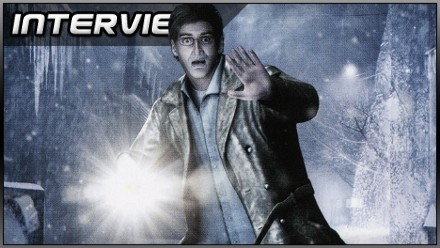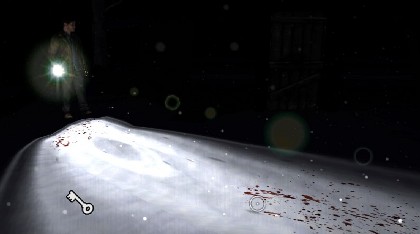Survival horror, it’s generally accepted, has fallen on hard times. The progress of the Resident Evil franchise perhaps typifies what Destructoid’s Jim Sterling terms “evolution into extinction”: the last numbered iteration was an action game in all but heritage, preferring pad-mashing brutality to ammo-deprived suspense, laser sights to locked doors, turrets to tenterhooks.
Drawn to the bombastic production values and sales figures of major action releases like God of War, and with one eye perhaps on the downfall of PC-based point and click adventuring, the genre’s oldest hands have dosed up on adrenaline. Resident Evil 4′s release was undoubtedly the turning point, its baying mobs and customizable weapons a far cry from the lurking terrors of yore. In 2008, Konami threw its hat into the ring alongside Capcom’s in the form of Silent Hill: Homecoming, while EA’s Dead Space applied the same principles in zero G. Even the Project Ego/Fatal Frame games, protected from turbulent market developments by their relative anonymity, are starting to twitch a little: the fourth one made use of a shoulder aim.
It’s a transition the minds behind the latest Silent Hill, Climax Group, are all too familiar with. Discussing the development of Silent Hill: Shattered Memories, a Wiimake of the PS1 original which launches in the UK on 26th February, Lead Producer Tomm Hulett comments wryly: “We looked at survival horror games now, and we saw they were really all about action, to the point where we call them ‘action horror’ games. Monster jumps out, you pull out your gun, you shoot him, he’s dead, you’re not scared anymore.”
Climax made its own contribution to this shift in Silent Hill: 0rigins, a dyed-in-the-wool PSP prequel which – prior to Homecoming, at least – boasted the franchise’s most combat-capable protagonist yet, but when it came to Shattered Memories, the developer was ready to turn a new leaf.
“The genesis of it wasn’t so much a reactionary thing as it was, you know, ‘when’s the last time I played a horror game that really scared me?’” says Lead Designer Sam Barlow. “A kind of feeling of ‘I’ve played a lot of horror games now and the template is fairly fixed’.
“And rather than picking that apart and stripping elements out, we said ‘right, let’s throw that away, and let’s pretend we’ve come down from Mars and we’ve never played a horror videogame. But we know what horror movies are like, and we know what thriller movies are like, that kind of stuff, and so what would we come up with?’ So it was trying to think of something new, something fresh and exciting, to see if there was a better way of doing horror in games.”
That “fresh and exciting” approach proved fairly straightforward: weaken the player to the point of incapacity. “We took out the elements that empower the player,” Hulett explains, “and threw you into this hostile environment, this nightmare world, where these intelligent creatures are pursuing you at every step. They can go through doors, they can climb over walls. They’re trying to get you, actively. And you have very little resources to escape them.”







 Satoru Iwata Video Interview - the late Nintendo president spoke with Kikizo in 2004 as 'Nintendo Revolution' loomed.
Satoru Iwata Video Interview - the late Nintendo president spoke with Kikizo in 2004 as 'Nintendo Revolution' loomed. Kaz Hirai Video Interview - the first of Kikizo's interviews with the man who went on to become global head of Sony.
Kaz Hirai Video Interview - the first of Kikizo's interviews with the man who went on to become global head of Sony. Ed Fries Video Interview - one of Xbox's founders discusses an epic journey from Excel to Xbox.
Ed Fries Video Interview - one of Xbox's founders discusses an epic journey from Excel to Xbox. Yu Suzuki, the Kikizo Interview - we spend time with one of gaming's most revered creators.
Yu Suzuki, the Kikizo Interview - we spend time with one of gaming's most revered creators. Tetris - The Making of an Icon: Alexey Pajitnov and Henk Rogers reveal the fascinating story behind Tetris
Tetris - The Making of an Icon: Alexey Pajitnov and Henk Rogers reveal the fascinating story behind Tetris Rare founders, Chris and Tim Stamper - their only interview? Genuinely 'rare' sit down with founders of the legendary studio.
Rare founders, Chris and Tim Stamper - their only interview? Genuinely 'rare' sit down with founders of the legendary studio. The History of First-Person Shooters - a retrospective, from Maze War to Modern Warfare
The History of First-Person Shooters - a retrospective, from Maze War to Modern Warfare